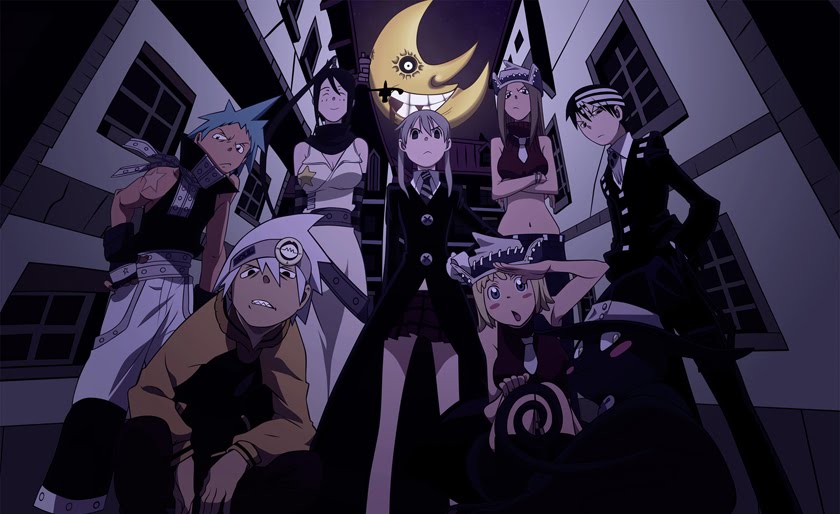22 June 2013 marked the end of a long two year journey to bring the NUS Comics and Animation Society's (NUSCAS) very first major event to fruition.
It started with a dream I had to put NUSCAS on the anime map. To have a hallmark event that people will mark down on their calendars as an event to look out for. For a year, MinnaCon stayed as an idea, slowly being fleshed out in the back of my head, occasionally bouncing ideas of other like minded people in NUSCAS to see how we could make this plan a reality. Finally, at the beginning of 2012, concrete plans were laid out for MinnaCon 2013. NUSCAS brought NTU Visual Arts Society (NTUVAS) into the picture, making MinnaCon not only the first university-organised ACG but also the first regional cross-university anime convention. This partnership also allowed the scale of MinnaCon to grow even larger than anything NUSCAS could have undertaken by itself.
We originally slated MinnaCon for January of 2013 to fill in the gap in the anime calendar that was once occupied by the now defunct Start Of Year (SOY) organised by the Japanese Tsubasa Club from Ngee Ann Polytechnic. In hindsight, it was a blessing that we delayed the event to its final date in June because even with the extra six months of preparation, there were still a number of hiccups that happened at MinnaCon due to a lack of preparation. This would've been obviously compounded by the fact that I would be absent due to my student exchange to USA.
So just before I flew to USA, the decision was made to postpone MinnaCon to 22 June 2013 after some fierce discussion amongst NUSCAS and NTUVAS. One major concern with the new date was that it was perilously close to Cosfest, quite possibly among the three biggest ACG events in Singapore so rather than directly compete against Cosfest, we decided to leverage on these circumstances and struck a deal to include the organisers of Cosfest, Singapore Cosplay Club (SCC), in the planning of MinnaCon.
During my half year absence, MinnaCon was left in the capable hands of Yanxu and Shawn from NUSCAS, Stifler from NTUVAS and finally Stephanie from SCC as they fleshed out the skeleton of MinnaCon that had been built over the previous two years. In the beginning I tried beating the time zone difference and attempted to join in the discussion over Skype but the 13-hour difference very quickly beat me back. So I resigned myself to being the man behind the Internet facade of MinnaCon, answering emails, designing and updating the website and maintaining MinnaCon's presence in Facebook.
Fastforward to 24 May 2013, one month before D-Day. The day I touched down back in Singapore. A lot the pieces have been put into place so all there was left to do was some aggressive publicising. Balancing Rag and looking for an internship along with MinnaCon was tough but fortunately still doable. There were some setback such as internal conflicts within the executive committee but fortunately for us, we managed to dodge any mission critical mishaps so MinnaCon moved forward like the steadfast ship that she was.
One week before MinnaCon, disaster struck. One that was beyond the control of the entire committee combined. Singapore was struck with the worst haze situation ever recorded in Singaporean history. The day before MinnaCon, the Pollutant Standards Index (PSI) reached a record 401, obliterating the previous recorded high of 272 set in the 1970s. The government was constantly advising the public to stay indoors and rumours spread that MinnaCon may be cancelled due to Singapore's ever worsening haze condition. Once again, the God of Fortune must have been smiling on us as we had all along planned MinnaCon to be an indoor event and the air-conditioning shielded us from the brunt of the haze's force so MinnaCon could proceed mostly unfazed. Nevertheless, the publicity department had to go into overdrive as we had to not only settle last minute entries to MinnaCon's various events but also constantly assure the public that MinnaCon was going to proceed as planned.
And finally the time had come. 22 June 2013. The morning was hectic and tensions ran high as the day opened with hazardous levels of haze (PSI = 320), the crew was scrambling about setting up the event and a miscommunication between one of our external event organisers and their participants had some participants showing up a 2.5 hours earlier than expected. Luckily, the entire crew held its own and order was quickly established just before the doors opened.
Things were looking up for MinnaCon as the day progressed. The haze dropped below unhealthy levels (PSI < 100) in the afternoon and participants continually flooded throughout the afternoon. The stage events had to be delayed due to a delay at another event which some of our participants were participating in but our stage crew very efficiently handled the situation and the rest of MinnaCon ran smoother than an arrow sailing to the bullseye.
At the end of the day, I honestly couldn't be more proud of how MinnaCon turned out. Though I was practically grounded at the stage the whole day due to my emcee duties, my few trips around the venue along with our ticket sales and the reports I hear from other friends and staff blew my expectation out of the water. There were definitely a number of problems which arose throughout the journey to this point and the haze situation put a major dent MinnaCon's success but despite all that, MinnaCon's success, being a first time event, surpassed all the benchmarks set for it. It has been a long an tiring journey to this point but there is certainly an undeniable sense of accomplishment to see a dream two years in the making come to life and become something greater than even my wildest imaginations.
